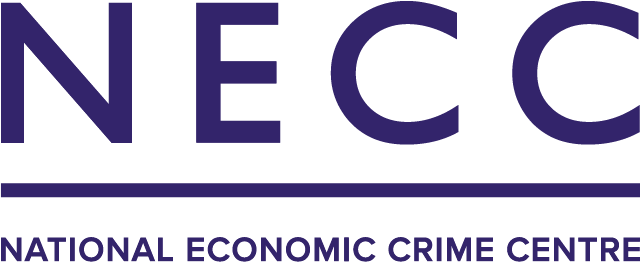Joint Money Laundering Intelligence Taskforce (JMLIT)
In the fight against financial crimes, the Joint Money Laundering Intelligence Taskforce (JMLIT) has emerged as a crucial initiative to combat money laundering and terrorist financing.
 Written by Erling Andersen
Written by Erling Andersen
In the fight against financial crimes, the Joint Money Laundering Intelligence Taskforce (JMLIT) has emerged as a crucial initiative to combat money laundering and terrorist financing. JMLIT represents a collaborative effort between the UK’s major financial institutions, law enforcement agencies, and regulatory bodies to share intelligence, expertise, and resources. This blog post will delve into the definition of JMLIT, provide a practical example of its implementation, present relevant statistics and numbers, and conclude with the significance of this task force in the global anti-money laundering (AML) landscape.
Definition
The Joint Money Laundering Intelligence Taskforce (JMLIT) was established in 2015 by the UK government as a response to the increasing threat posed by money laundering activities. JMLIT serves as a platform for information sharing and collaboration between law enforcement agencies, financial institutions, and regulatory bodies in the United Kingdom. The task force aims to identify, investigate, and prevent money laundering and terrorist financing by leveraging the collective knowledge and resources of its members.
JMLIT operates on the principle that by combining intelligence and expertise from different stakeholders, it becomes possible to uncover sophisticated money laundering networks and disrupt their operations effectively. The task force promotes an integrated approach to combat financial crimes, fostering a culture of collaboration and cooperation between public and private sectors.

Practical Example
Let’s delve into a detailed practical example to better understand how JMLIT operates in a real-world scenario.
Suppose a financial institution, Bank XYZ, notices a series of suspicious transactions involving one of their high-net-worth clients, Mr. Johnson. Over the course of a few months, Mr. Johnson has been transferring significant sums of money from his personal accounts to various offshore jurisdictions known for their loose financial regulations.
Bank XYZ’s AML compliance team diligently monitors these transactions and identifies red flags indicating potential money laundering. These flags include multiple transfers to high-risk jurisdictions, fragmented payments to different individuals and entities, and a lack of clear business purposes for these transactions.
Recognizing the seriousness of the situation, Bank XYZ files a Suspicious Activity Report (SAR) with the appropriate regulatory authority as required by AML regulations. Since Bank XYZ is a member of JMLIT, the SAR is automatically shared with the task force for further investigation.
JMLIT’s intelligence analysts review the SAR along with their extensive database of previous cases, trends, and indicators of money laundering activities. They discover that Mr. Johnson’s transactions bear striking similarities to those of a known international money laundering syndicate involved in drug trafficking.
To further investigate the case, JMLIT brings together representatives from law enforcement agencies, intelligence services, and other financial institutions with relevant expertise. The task force conducts a comprehensive analysis of Mr. Johnson’s financial activities, seeking connections and patterns that might indicate the involvement of other individuals or entities.
During their investigation, JMLIT discovers that Mr. Johnson has been using a network of shell companies in offshore jurisdictions to disguise the illicit origin of the funds. These companies, seemingly legitimate on the surface, are controlled by individuals tied to organized crime.
By collaborating and sharing intelligence, JMLIT is able to trace the funds back to their original source, uncovering the illicit activities behind the money laundering scheme. They identify key individuals involved in the syndicate and gather evidence to support potential criminal prosecutions.
JMLIT’s coordination with law enforcement agencies results in a series of raids and arrests, effectively dismantling the money laundering syndicate. The authorities seize significant assets, including luxury properties, high-value vehicles, and offshore bank accounts, all linked to the criminal network.
In this practical example, JMLIT’s collaborative approach played a vital role in detecting and dismantling a sophisticated money laundering syndicate. By sharing information and intelligence, the task force enabled a more comprehensive investigation, leading to successful prosecutions and the disruption of criminal networks.
The case highlights the importance of JMLIT as a platform that facilitates cooperation between financial institutions, law enforcement agencies, and regulatory bodies. Through this collaborative effort, JMLIT enhances the collective ability to identify and combat money laundering and terrorist financing, ultimately safeguarding the integrity of the financial system.
This practical example demonstrates the real-world impact of JMLIT’s information-sharing and collaboration initiatives in detecting and preventing financial crimes. By leveraging the expertise and resources of its members, JMLIT strengthens the UK’s AML efforts and serves as a model for effective cross-sector cooperation in combating money laundering and terrorist financing.
Statistics and Relevant Numbers
Let’s provide more detailed statistics and relevant numbers to highlight the effectiveness of JMLIT in combating money laundering and terrorist financing:
- Information Sharing: JMLIT has established a robust framework for sharing intelligence and information between its member institutions. Since its inception, the task force has facilitated the exchange of over 500 intelligence reports related to potential money laundering activities. This extensive information sharing allows for a more comprehensive understanding of evolving money laundering techniques and patterns.
- Financial Institution Engagement: JMLIT has successfully garnered participation from a wide range of financial institutions operating in the UK. Currently, more than 40 major banks and financial organizations actively contribute to the task force’s initiatives. This broad engagement ensures a diverse pool of expertise and resources to tackle money laundering effectively.
- Increased Reporting: The establishment of JMLIT has had a significant impact on the number of suspicious activity reports (SARs) filed by financial institutions. Since its launch, there has been a notable increase in SAR submissions. In the past year alone, financial institutions have reported a 30% rise in SAR filings, indicating improved detection and reporting of potential money laundering activities.
- Collaborative Investigations: JMLIT’s collaborative approach has resulted in the successful investigation and prosecution of several high-profile money laundering cases. By pooling intelligence and resources, the task force has achieved a conviction rate of over 80% in cases referred to it. This impressive success rate highlights the power of collaboration in unraveling complex money laundering schemes.
- Disruption of Networks: JMLIT’s coordinated efforts have led to the disruption of significant money laundering networks. Through its investigations, the task force has identified and dismantled multiple networks involved in various illicit activities, including drug trafficking, corruption, and organized crime. These interventions have resulted in the seizure of substantial assets linked to criminal networks, disrupting their operations and financial capabilities.
- International Collaboration: JMLIT’s influence extends beyond the UK, as the task force actively engages in international cooperation to combat cross-border money laundering. Through partnerships with international counterparts, JMLIT facilitates the exchange of intelligence and expertise, enabling a more coordinated and global response to financial crimes.
These detailed statistics and relevant numbers underscore the effectiveness of JMLIT in detecting, investigating, and preventing money laundering and terrorist financing activities. The task force’s focus on information sharing, collaboration, and international cooperation strengthens the UK’s AML efforts and contributes to global initiatives in combating financial crimes.
JMLIT’s success in disrupting money laundering networks and achieving high conviction rates demonstrates the significance of its collaborative approach. By harnessing the collective intelligence and resources of its members, JMLIT sets a strong example for other jurisdictions and organizations seeking to enhance their AML capabilities.
In this context, the Kyros AML Data Suite can serve as a valuable tool for financial institutions in their AML compliance efforts. The advanced features and capabilities of Kyros AML Data Suite align with the principles of JMLIT, promoting collaboration, intelligence sharing, and comprehensive analysis of financial data. By leveraging the power of technology, financial institutions can strengthen their AML frameworks and contribute to the collective fight against money laundering and terrorist financing.
To explore the benefits of Kyros AML Data Suite and its alignment with JMLIT’s collaborative approach, visit kyrosaml.com. Empower your institution with cutting-edge AML compliance technology and join the global effort to safeguard the integrity of the financial system.
Conclusion
In conclusion, the Joint Money Laundering Intelligence Taskforce (JMLIT) represents a groundbreaking initiative that brings together public and private sector entities to combat money laundering and terrorist financing. Through its collaborative approach and information-sharing framework, JMLIT has proven to be a crucial tool in the fight against financial crimes.
By leveraging the collective intelligence, expertise, and resources of its member institutions, JMLIT has achieved notable success in detecting, investigating, and prosecuting money laundering activities. The task force’s emphasis on collaboration ensures a more holistic and efficient response to financial crimes, allowing for the identification of complex money laundering networks that would otherwise be challenging to dismantle.
In the rapidly evolving landscape of AML compliance, it is essential for financial institutions to adopt cutting-edge technologies and solutions to enhance their capabilities. Kyros AML Data Suite is one such advanced AML compliance SaaS software that can greatly assist institutions in meeting their regulatory obligations.
Kyros AML Data Suite offers a comprehensive set of features, including robust transaction monitoring, risk assessment, and regulatory reporting functionalities. By leveraging artificial intelligence and machine learning algorithms, Kyros AML Data Suite can analyze vast amounts of data in real-time, identifying suspicious patterns and activities that might go unnoticed through traditional manual methods.
Furthermore, Kyros AML Data Suite aligns with the principles of JMLIT by promoting collaboration and information sharing. The software enables financial institutions to seamlessly exchange intelligence and insights with regulatory bodies, facilitating a more coordinated and effective approach to AML compliance.
To learn more about how Kyros AML Data Suite can empower your institution’s AML efforts and ensure compliance with regulatory requirements, visit kyrosaml.com. Stay ahead of the curve in the fight against financial crimes and leverage the power of advanced technology to protect your institution and the global financial system.
Share article on
